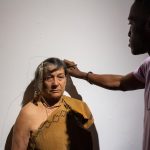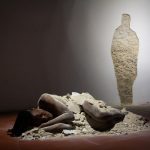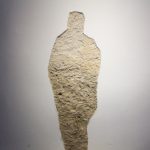Ascendencia Charrúa
Espacio de Arte Contemporáneo, Montevideo, Uruguay.
with Mary Correa (marithué)
Curated by Silvio de Gracia
When the Spaniards arrived at Río de la Plata in the 16th century, the Charrúas already occupied the area to the north and south of the Río Negro as well as the area approaching the Atlantic coast in what is now known as the Department of Rocha within the current Uruguayan territory. In 1831, the Charrúa population was drastically reduced because of an attack led by Fructuoso Rivera, who organized an army to expropriate the lands in which the Charrúas moved freely. This historical event is known as the slaughter of Salsipuedes, in which more than 40 Charrúas were killed and another 300 were captured and sent to the capital of the country in a forced march. Most of the prisoners, mainly women and children, were sent to Montevideo where they were subsequently separated, enslaved, and Christianized. Four adults were sent to France and exhibited to the public as exotic specimens and soon died thereafter. This work reflects on the historical void in the collective ancestral memory of Uruguayans today. It also reflects on the ethnocide and violence perpetrated by the Government against the Charrúas, making them invisible, subjecting them to discrimination, and depriving them of their fundamental rights. To this day, they continue to fight despite the endured systemic oppression.
A Uruguayan descendant of Charrúa agrees to have the silhouette of his body sculpted in one of the walls of the museum by means of a chisel and a hammer. The debris removed is used to cover my body.
(Presented as part of the exhibition La Persistencia del Cuerpo: Rastros del arte de performance en América Latina)



